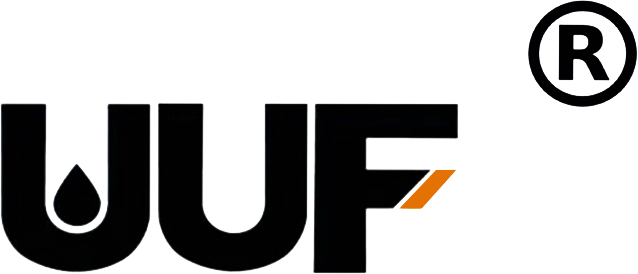The Ultimate Guide to Choosing Valve Cover Gasket Sealant
Time:
2025-10-06
The Ultimate Guide to Choosing Valve Cover Gasket Sealant When it comes to maintaining your vehicle, ensuring a proper seal on the valve cover is crucial. A faulty valve cover gasket can lead to oil leaks, engine performance issues, and costly repairs. In this guide, we will delve into the world of valve cover gasket sealants, providing you with the knowledge and tools needed to make an informed c
The Ultimate Guide to Choosing Valve Cover Gasket Sealant
When it comes to maintaining your vehicle, ensuring a proper seal on the valve cover is crucial. A faulty valve cover gasket can lead to oil leaks, engine performance issues, and costly repairs. In this guide, we will delve into the world of valve cover gasket sealants, providing you with the knowledge and tools needed to make an informed choice. Let's explore the types, application methods, and best practices for selecting the right sealant for your needs.
Table of Contents
- Introduction to Valve Cover Gasket Sealants
- Understanding Valve Cover Gaskets
- Types of Valve Cover Gasket Sealants
- Factors to Consider When Choosing Sealant
- Application Techniques for Valve Cover Gasket Sealants
- Common Mistakes to Avoid
- Maintenance Tips for Valve Covers
- Frequently Asked Questions
Introduction to Valve Cover Gasket Sealants
The valve cover gasket serves a significant purpose in your vehicle’s engine. It creates a seal between the valve cover and the cylinder head, preventing oil leaks and ensuring that oil flows smoothly through the engine components. Over time, gaskets can degrade due to heat, oil exposure, and environmental factors. To effectively seal any gaps, the right valve cover gasket sealant is essential.
Understanding Valve Cover Gaskets
A valve cover gasket is typically made from rubber or cork and is designed to withstand high temperatures and pressures. Its main function is to keep engine oil contained within the valve cover while allowing for the movement of air, providing necessary ventilation. Knowing more about the types of gaskets and their construction materials helps in selecting a compatible sealant.
Why Valve Cover Gaskets Fail
Valve cover gaskets can fail for several reasons, including:
- Heat Exposure: Continuous exposure to high temperatures can cause the gasket material to harden and crack.
- Oil Degradation: Oil breaks down the gasket over time, leading to leaks.
- Improper Installation: Over-tightening or uneven pressure can damage the gasket during installation.
Types of Valve Cover Gasket Sealants
Choosing the right sealant is crucial for ensuring that your valve cover gasket performs well. Below are the main types of sealants available on the market:
Silicone Sealants
Silicone sealants are popular due to their flexibility and durability. They can withstand high temperatures and are resistant to oil and chemicals. Silicone sealants are excellent for both new gasket installations and repairs. When using silicone, it's essential to ensure that the surfaces are clean and dry for maximum adhesion.
Rubber Gasket Sealants
Rubber gasket sealants are designed specifically for rubber gaskets. They provide excellent sealing capabilities and are beneficial for high-performance engines. These sealants maintain flexibility and can handle vibrations and thermal expansion.
Liquid Gasket Sealants
Liquid gasket sealants come in tubes and are applied in a thin layer. They cure to form a solid gasket-like seal. These products are ideal for those who prefer a customizable approach, as they allow for easy application in tight spaces.
Factors to Consider When Choosing Sealant
Several factors influence the choice of the right valve cover gasket sealant for your needs:
1. Temperature Resistance
Consider the operating temperature range of your engine. The sealant must withstand the heat generated during operation without breaking down.
2. Chemical Resistance
Ensure that the sealant can resist exposure to oil, coolant, and other fluids found in the engine compartment.
3. Application Method
Different sealants have varying application methods. Choose a sealant that matches your comfort level and skill in applying it.
4. Cure Time
Check the cure time of the sealant, as some products require extended periods before the engine can be started. This is crucial for planning your repair work.
5. Brand Reputation
Opt for well-reviewed and reputable brands, as they tend to offer products that have been tested for reliability and performance.
Application Techniques for Valve Cover Gasket Sealants
Proper application of gasket sealant is vital for achieving a leak-proof seal. Follow these steps for best results:
1. Clean the Surface
Ensure that both the valve cover and the cylinder head surfaces are clean and free from old gasket material, oil, and debris. Use a scraper or a solvent for thorough cleaning.
2. Apply the Sealant
For silicone or liquid gasket sealants, apply a continuous bead along the perimeter of the gasket surface. For rubber gaskets, follow the manufacturer's recommendations regarding the application of sealant, if necessary.
3. Position the Valve Cover
Carefully place the valve cover on the cylinder head, ensuring that it aligns correctly with the mounting holes. Avoid shifting or twisting the cover once in place.
4. Torque the Bolts
Following the recommended torque specifications for your vehicle, tighten the bolts in a criss-cross pattern to distribute pressure evenly on the gasket.
5. Allow to Cure
Let the sealant cure as per the manufacturer’s instructions before starting the engine. This step is critical to prevent leaks.
Common Mistakes to Avoid
When applying valve cover gasket sealant, it's easy to make mistakes that can lead to leaks. Here are some common pitfalls to avoid:
1. Skipping Surface Preparation
Neglecting to clean the surfaces properly can result in poor adhesion and future leaks.
2. Over-applying Sealant
Using too much sealant can cause it to ooze out when the valve cover is tightened, potentially leading to blockages or other issues.
3. Ignoring Cure Time
Starting the engine before the sealant has fully cured can compromise the seal and lead to leaks.
4. Inconsistent Torque Specifications
Failing to follow the correct torque sequence or specifications can cause uneven pressure and gasket failure.
Maintenance Tips for Valve Covers
Proper maintenance can prolong the life of your valve cover gasket and sealant:
1. Regular Inspections
Check for any signs of oil leaks around the valve cover area regularly. Early detection can save you from more significant issues.
2. Keep the Engine Clean
Maintaining a clean engine bay can help prevent dirt and debris from affecting the gasket's performance.
3. Follow Manufacturer Guidelines
Always adhere to your vehicle's maintenance schedule and guidelines for oil changes and inspections.
Frequently Asked Questions
1. How do I know if my valve cover gasket is leaking?
Common signs include oil spots under your vehicle, the smell of burning oil, or visible oil residue around the valve cover.
2. Can I use any sealant for my valve cover gasket?
It’s important to use a sealant compatible with the materials of your gasket and engine. Always refer to the manufacturer’s specifications.
3. How often should I replace my valve cover gasket?
The lifespan of a valve cover gasket can vary, but it's typically recommended to inspect it every 30,000 to 50,000 miles or as specified in your vehicle’s manual.
4. Is it necessary to use sealant with a rubber gasket?
While rubber gaskets often create a good seal on their own, a thin layer of sealant can enhance sealing performance, especially on older or worn surfaces.
5. What should I do if my engine is leaking oil?
Inspect the valve cover gasket and surrounding areas for signs of leakage. If you identify a problem, consider consulting a professional mechanic for repairs.
Conclusion
Selecting the right valve cover gasket sealant is an essential aspect of maintaining your vehicle’s engine health. By understanding the different types of sealants, considering various factors, and following proper application techniques, you can ensure a reliable and lasting seal. Regular maintenance and inspections can help you catch issues early and keep your engine running smoothly. Armed with the knowledge from this guide, you are now prepared to make an informed choice that will enhance your vehicle's performance and longevity. Seal it right, and drive with confidence!
Keyword:
valve cover gasket sealant


















